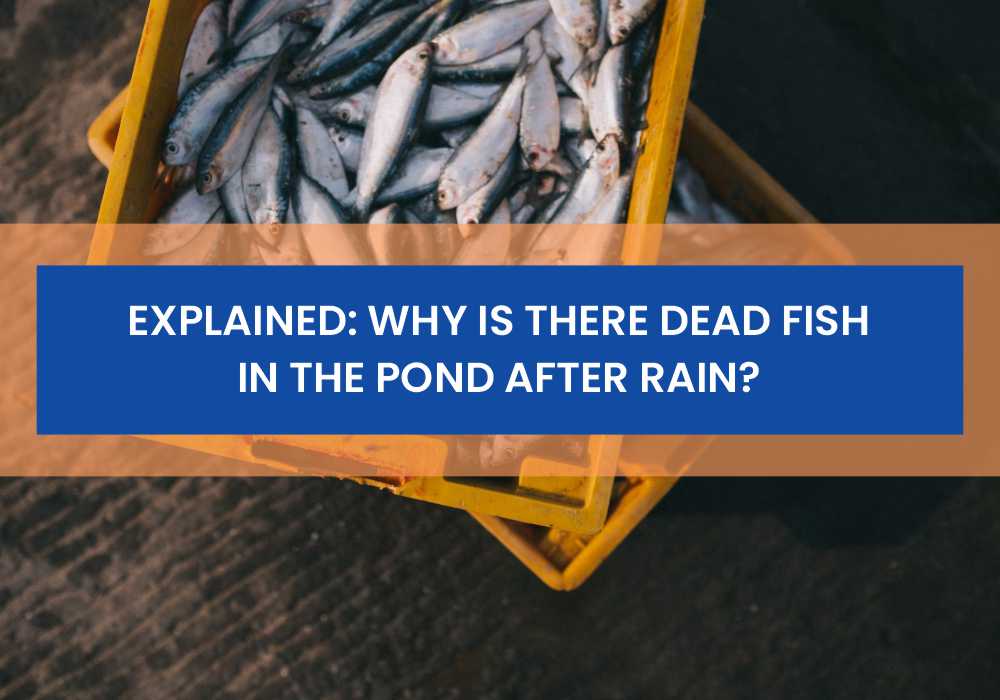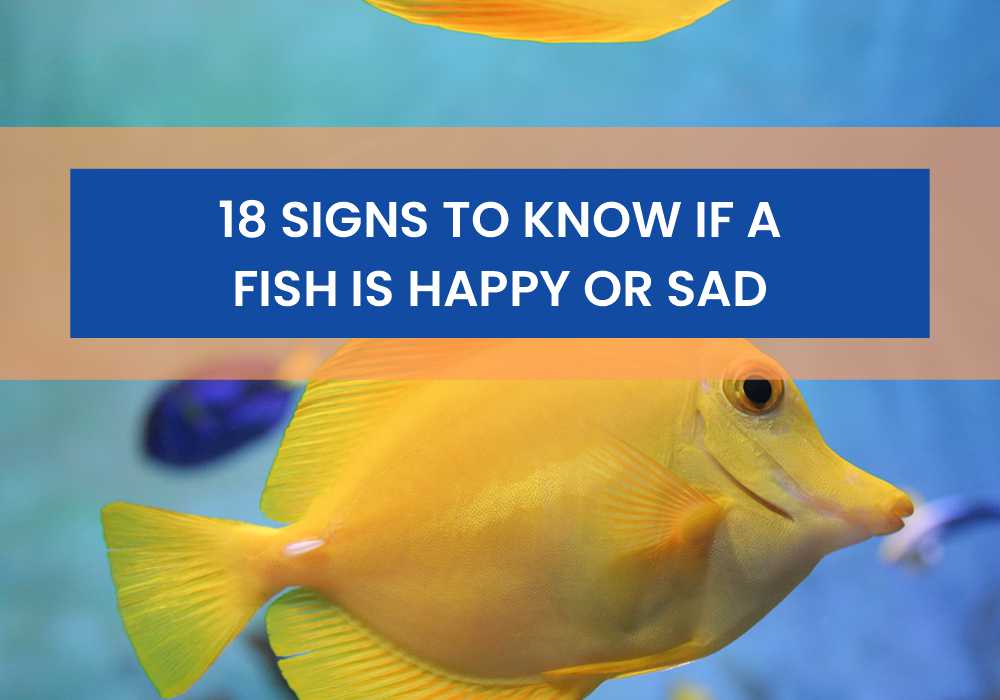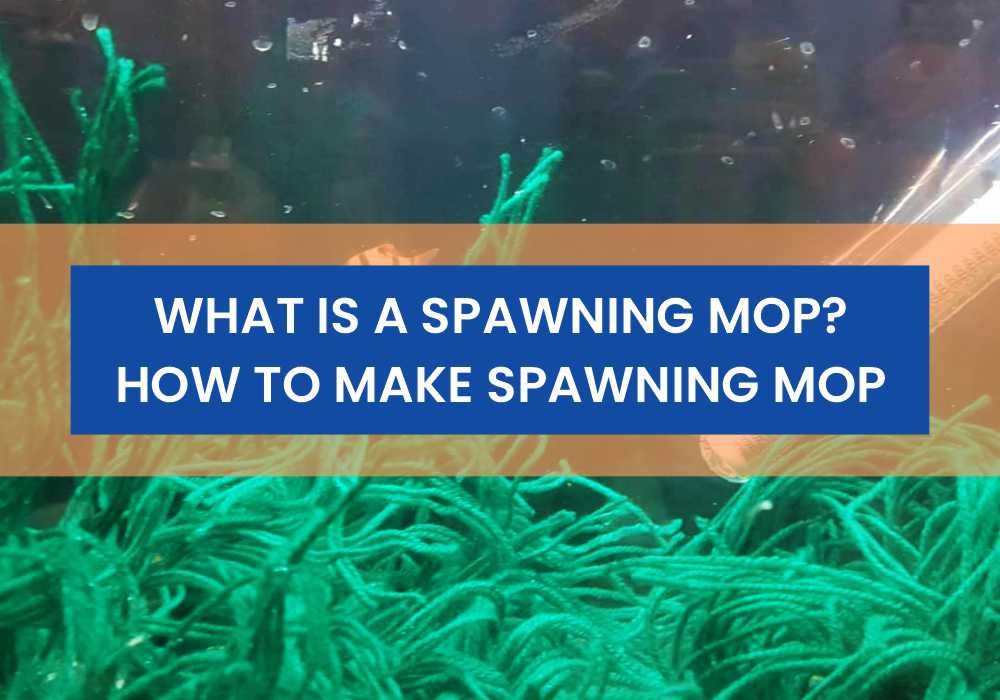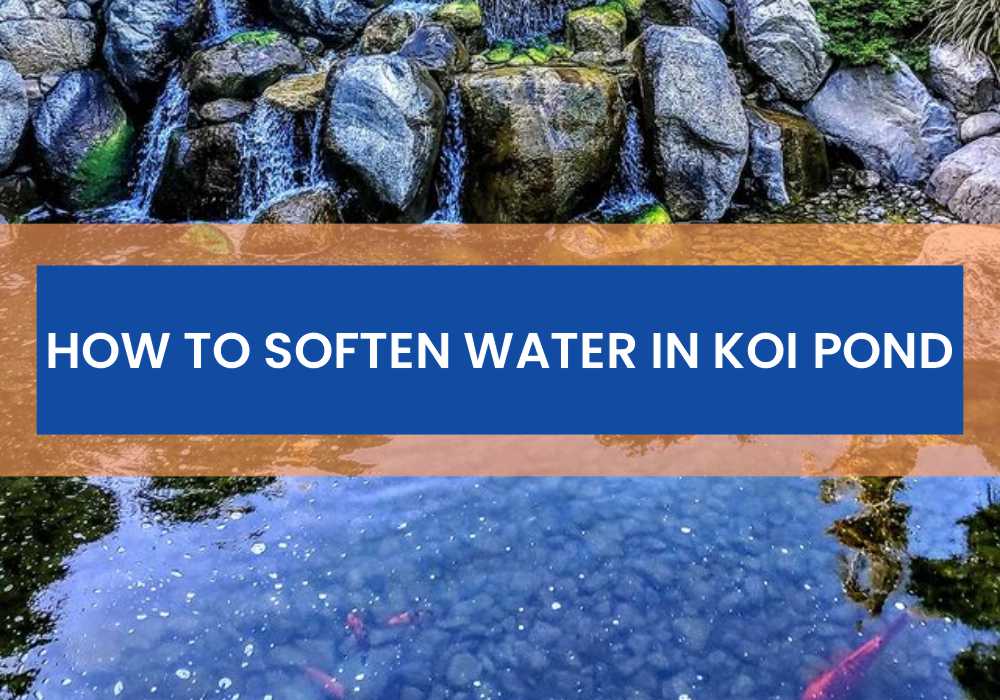As an Affiliate, We may earn a commission that doesn't cost you extra from qualifying purchases using links in this post. It helps keeps this blog running.
Have you ever witnessed lots of dead fish in an outdoor pond after heavy rainfall? Sad and as horrific as it sounds, unfortunately, this is a common occurrence for many pond owners around the world. It can be quite distressing to see a large number of fish floating on the surface or washed up on the shore, indicating that they have died. Not only does this event have a significant impact on the aquatic life in the pond, but it can also affect the local fishing industry and the entire ecosystem. Therefore, it is important to understand this phenomenon and take measures to prevent it from happening in the future.
The most common reason why fish may die after heavy rain is due to the dramatic drop in oxygen levels in ponds. This is particularly true for stagnant ponds or those with a lot of vegetation. Additionally, the rain can stir up sediments and pollutants that can be harmful to fish. In severe cases, heavy rains can even cause ponds to flood, washing away fish or damaging their habitat. Understanding the causes of this phenomenon and implementing preventative measures can help protect the fish and preserve the ecosystem.
But why exactly do fish dies especially after rainfall?
Here Are the Causes of Dead Fish in a Pond After Rain
Of course, you are here because you want to know why there are so many dead fish in the pond after it rains. The truth is, there are several causes for this phenomenon.
Below are some of them:
1) Low oxygen levels in the water caused by heavy rainfall:
When it rains, the water in the pond becomes murky, which limits the amount of light that penetrates the water. This can reduce the amount of oxygen that is dissolved in the water, making it difficult for fish to survive. Fish need oxygen to breathe, so if there is not enough oxygen in the water, they will begin to suffocate and eventually die. This is why it’s important to monitor the oxygen levels in the pond during and after heavy rainfall to ensure that the fish have enough oxygen to survive.
2) Runoff from nearby farms or residential areas carrying pollutants:
Heavy rainfall can also wash pollutants from nearby farms or residential areas into the pond. These pollutants can be toxic to fish, causing them to die. Pollutants from these areas, such as pesticides, herbicides, and fertilizers, are toxic to fish and can cause them to die if they come in contact with them.
This is why it’s so important for farmers and homeowners to properly manage their lands to minimize runoff and reduce the number of pollutants that enter nearby bodies of water. By implementing best management practices, such as using cover crops, reducing tillage, and using alternative pest management strategies, farmers can reduce the amount of pollutants that run off their fields and into nearby ponds, helping to protect the fish and other aquatic life that call those ponds home.
3) Algal blooms caused by increased nutrients in the water:
Rainfall can also increase the levels of nutrients in the water, which can lead to algal blooms. Algal blooms caused by increased nutrients in water can be harmful to fish in a pond because these blooms can consume large amounts of oxygen and decrease the amount of light that reaches the bottom of the pond. Which can ultimately lead to a lack of oxygen, also known as hypoxia, resulting in fish death.
Algal blooms can be caused by agricultural runoff, sewage discharge, and natural processes. To prevent or mitigate these blooms, it’s necessary to monitor the water quality and nutrient levels, prevent pollution, and implement best agricultural practices. In some cases, the use of algaecides can also be helpful.
4) Changes in water temperature:
The sudden change in temperature due to heavy rainfall can also cause stress on fish, making them vulnerable to disease or death.
Changes in water temperature can be a major cause of fish death in a pond, especially after heavy rainfall. Most fishes have a specific temperature range in which they can survive and thrive based on their original habitat, and deviations from this range can cause stress on the fish, making them more vulnerable to disease and death.
Sudden changes in water temperature will disrupt the balance of the aquatic ecosystem, leading to a decrease in oxygen levels and an increase in harmful bacteria. It’s important to monitor the water temperature and take measures to maintain a stable temperature range in the pond to avoid fish death.
5) Siltation:
Heavy rainfall can also cause erosion, which can lead to an increase in silt in the pond. The accumulation of sediment in a body of water can have a significant impact on fish populations in a pond. The sediment can settle on the bottom of the pond and decrease the amount of oxygen available for the fish to breathe. This can lead to suffocation and death, as fish require oxygen to survive.
Additionally, the sediment can also smother the fish eggs and decrease the ability of fish to reproduce, which can further reduce the population. Overall, siltation can have a detrimental impact on the overall health and survival of fish in a pond.
6) Bacterial Bloom:
The increased level of nutrients and organic matter in the pond due to heavy rainfall can also lead to an overgrowth of bacteria, consuming oxygen and depleting the water of oxygen that the fish need to survive.
Bacterial Bloom can kill fish in a pond by consuming the oxygen that fish need to survive. The increased level of nutrients and organic matter in the pond, as a result of heavy rainfall, can lead to an overgrowth of bacteria. This results in a depletion of dissolved oxygen in the water, making it difficult for fish to survive. In severe cases, the oxygen levels can drop to the point where fish suffocate, leading to mass fish deaths. This phenomenon is known as “Bacterial Bloom” and it’s a serious environmental issue that can have severe consequences on the aquatic life in the pond.
7) Stormwater Drainage:
Ponds that are close or connected to stormwater drainage systems can experience a sudden influx of water during heavy rainfall, which can cause a change in the water chemistry and temperature, leading to fish death.
Stormwater drainage systems are designed to quickly channel water away from developed areas, such as farms or residential areas, to prevent flooding. However, these systems can also carry pollutants and sediment into nearby ponds. If a pond is connected to a stormwater drainage system, it can experience a sudden influx of water during heavy rainfall, which can cause a change in the water chemistry and temperature, leading to fish death. This can happen for example by lowering the oxygen levels in the water, or by introducing pollutants and bacteria that are harmful to the fish.
8) Inadequate aeration:
Ponds that are not properly aerated can also experience low oxygen levels during heavy rainfall, as the added water can decrease the amount of oxygen that is dissolved in the water.
Inadequate aeration is one of the major causes of fish death in a pond after heavy rainfall. The process of aeration is essential to maintaining healthy levels of dissolved oxygen in the water, which is crucial for the survival of fish. When a pond is not properly aerated, the oxygen levels can drop, making it difficult for fish to survive. This can lead to a decline in fish populations and even fish death. Inadequate aeration can be caused by a lack of oxygen-producing plants or inadequate circulation of the water. It’s important to implement proper aeration methods to ensure the health and survival of fish in a pond.
It’s important to note that not all the above causes happen in every case, but a combination of them or a single one of them can cause the death of fish in the pond after heavy rainfall.
How To Prevent Fishes From Dying In Ponds After Rainfall (5 Mitigation Measures)
Prevention and mitigation measures are important in order to protect fish from dying in a pond after heavy rainfall. Here are a few examples:
1) Proper management of nearby farms and residential areas:
Runoff from these areas can carry pollutants and nutrients that can contribute to the death of fish in a pond. Implementing best management practices, such as using cover crops, buffer strips, and sediment basins can reduce the number of pollutants and nutrients that enter the pond.
2) Water treatment methods:
Installing a water treatment system, such as an aeration system or a biofilter, can help increase the oxygen levels in the water and remove pollutants.
HIBLOW HP-80 Pond Aerator
The recommended pond aerator is the HIBLOW HP-80 Pond Aerator with a low sound level. It also helps water circulation and aerates ponds up to 1/2 acre at 10′ or less in depth. At the same time, it is energy-efficient and oil-free.
3) Monitoring the pond:
Regularly monitoring the pond for changes in oxygen levels, water temperature, and water quality can help detect potential problems early on and allow for prompt action to be taken.
4) Algal bloom prevention:
Algal blooms can occur when there is an excessive amount of nutrients in the water. Implementing measures such as reducing nutrient inputs and promoting the growth of aquatic plants can help prevent algal blooms and protect the fish from dying.
Implementing fish stocking practices that cater to the species that can adapt to the local weather conditions to avoid fish die-offs.
5) Fish relocation:
During heavy rainfall, fish can become stressed and may not have enough oxygen to survive. In this case, relocating the fish to a different body of water with better conditions can help save their lives. It’s important to check with the local authorities before relocating the fish to make sure it’s legal.
By implementing these measures, it is possible to reduce the risk of fish dying in a pond after heavy rainfall and maintain a healthy ecosystem.
The Impact of Dead Fish in a Pond
As a fish pond owner, there is a certain sense of dread and sadness you experience at the sight of dead fishes floating on the surface of the water, with their lifeless bodies being a stark reminder of the devastation that had occurred.
The impact of events like this is far-reaching and affects not only the fish in the pond but also the other aquatic life that called it home. Without the fish, the food chain will be disrupted, causing a ripple effect throughout the ecosystem. The local fishing industry will also be greatly impacted, as the supply of fish for commercial and recreational use will be greatly reduced.
The economic impact will not only be felt by the fishing industry but also by the local community depending on the income generated by fishing.
The environmental impact will also be significant as the death of so many fish in such a short period of time can upset the delicate balance of the ecosystem, leading to a cascade of negative effects that can take years to recover. The pollutants or other factors that caused the fish to die can also be harmful to other forms of aquatic life and even to humans if not controlled.
Seeing dead fish in a pond after rainfall or fish being washed off after heavy rainfall is a harsh reminder of the fragility of our natural resources and the importance of protecting and preserving them for future generations.

I’m Akin Bouchard. Even though I now own several different fish species, I first became a koi pond owner because I loved these creatures and wanted to turn my passion into something more serious. I take pride in my collection of koi fish and love sharing my knowledge with others interested in these beautiful creatures.





